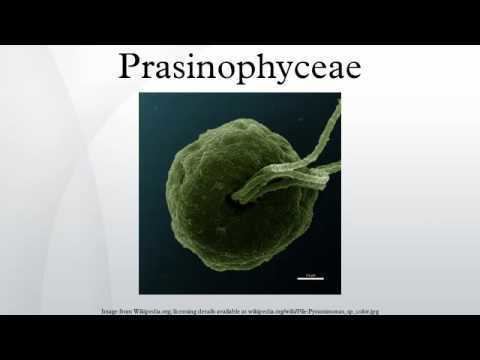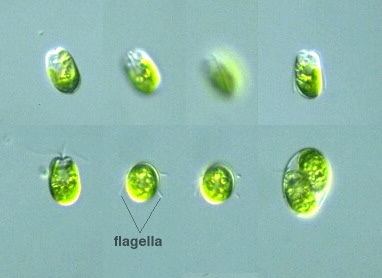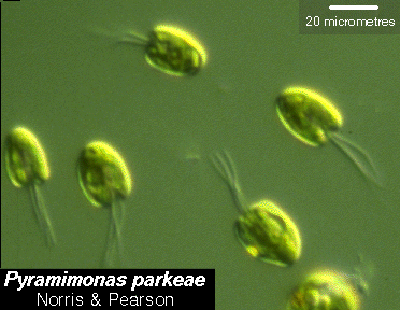Domain Eukaryota Higher classification Green algae | Scientific name Prasinophyceae Rank Class | |
 | ||
Similar | ||
The Prasinophytes are a paraphyletic class of unicellular green algae in the Division Chlorophyta. Prasinophytes mainly include marine planktonic species, as well as some freshwater representatives. The prasinophytes are morphologically diverse, including flagellates with one to eight flagella and non-motile (coccoid) unicells. The cells of many species are covered with organic body scales; others are naked. One well known genus is Ostreococcus, considered to be the smallest (ca. 0.95 μm) free-living eukaryote, found in marine waters worldwide. Prasinophytes have simple cellular structures, containing a single chloroplast and a single mitochondrion. The genomes are relatively small compared to other eukaryotes (about 12 Mbp for Ostreococcus and 21 Mbp for Micromonas).
Contents
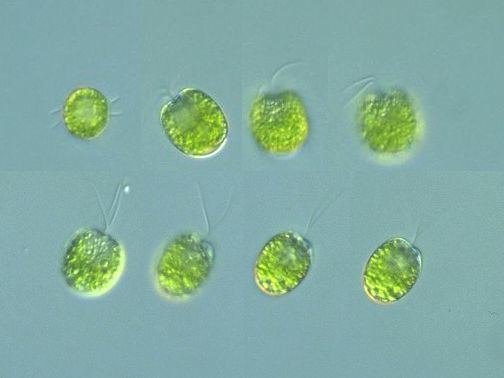
Recent studies agree that the prasinophytes are a non-evolutionary grouping (paraphyletic) of chlorophyte green algae from different clades. Alternative classifications of the chlorophytes have been proposed in which this class is replaced by at least six separate taxa.
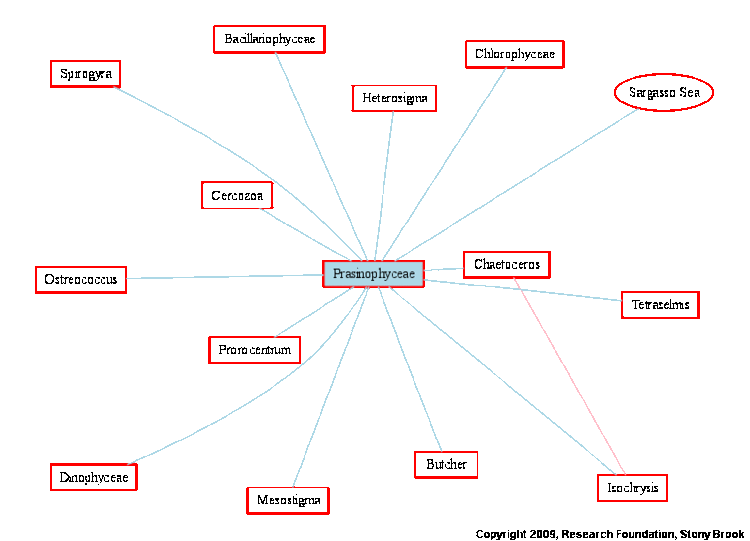
Ecology
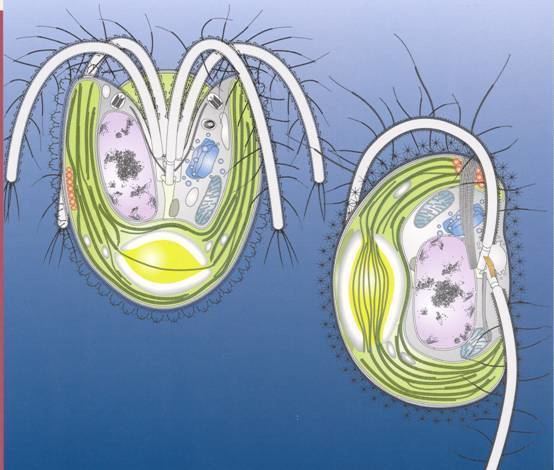
A study of photosynthetic gene-sequence diversity (rbcL) in the Gulf of Mexico indicated that Prasinophytes are particularly prevalent at the Subsurface Chlorophyll Maximum (SCM) and several different ecotypes of Ostreococcus have been detected in the environment. These ecotypes were thought to be distinguished in the environment by their adaptation to light intensities. O. lucimarinus was isolated from a high-light environment and observed year-round in the coastal North Pacific Ocean. RCC141 was considered low-light, because it was isolated from the lower euphotic zone. These strains, or ecotypes, were later shown to live in different habitats (open-ocean or mesotrophic) and their distributions do not appear to be connected to light availability. O. tauri was isolated from a coastal lagoon and appears to be light-polyvalent. Genetic data indicates that distinct molecular differences exist between the different ecotypes that have been detected.
Phylogeny

Recent studies agree that the prasinophytes are not a natural group, being highly paraphyletic. Relationships among the groups making up the Chlorophyta are not fully resolved. The cladogram produced by Leliaert et al. 2011 is shown below. The blue shaded groups are or have traditionally been placed in the Prasinophyceae). The species Mesostigma viride has been shown to be a member of the Streptophyta rather than the Chlorophyta.
